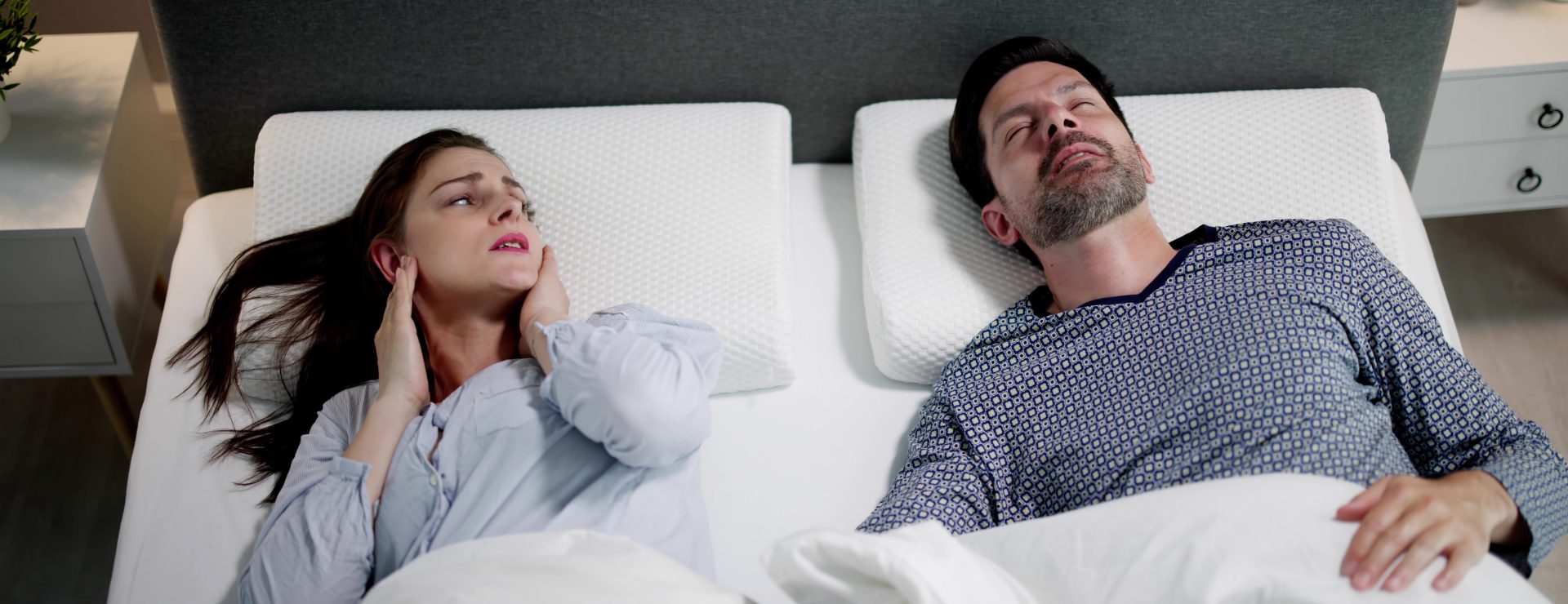What Is Obstructive Sleep Apnoea?
Blog Health News 9th February 2024
If you wake up frequently throughout the night, you could be experiencing obstructive sleep apnoea. A common sleep disorder that affects an estimated 1.5 million adults in the UK, sleep apnoea occurs when you stop breathing for more than 10 seconds at a time while asleep. It could happen once or twice, or potentially hundreds of times, throughout the night.
Despite being common, sleep apnoea is largely underdiagnosed, which can shorten life expectancy and is associated with hypertension, diabetes, coronary artery disease, and stroke.
Who is at risk?
If you are obese, have a large neck size, are male, drink alcohol, or have a family history of sleep disorders, you are more at risk of developing sleep apnoea.
Obese people can develop fat deposits in the neck that can narrow their airways leading to breathing fluctuations throughout the night. A large neck size of around 17 inches or more can also lead to sleep apnoea.
Men are more likely than women to develop the disorder, and people drinking alcohol or using sedatives to sleep can stop breathing for longer periods of time.
People with high blood pressure, diabetes, or an irregular heartbeat are more likely to develop sleep apnoea, as well as people with any jaw abnormalities such as receding jaw, large tonsils and a deviated septum.
What are the symptoms?
While you’re sleeping, you can experience symptoms ranging from snoring, waking up to go to the toilet, frequent coughing, and insomnia, leading to an unrefreshing sleep. During the day, you could experience a dry mouth, memory loss, mood swings and depression.
How is it treated?
Your sleep doctor will help you to create a personalised treatment plan depending on the particular challenges contributing to your sleep apnoea. This may be in collaboration with a dentist, psychologist and sleep technician and may include any combination of these treatments:
- Continuous Positive Airway Pressure (CPAP) machine: A CPAP machine sends a steady flow of pressurised air into your nose and mouth as you sleep. This keeps your airways open and helps you breathe normally. However there are other treatment alternatives.
- Oral Appliance Therapy: An oral device that fits over your teeth to create a jaw thrust and prevent collapse of the upper airways can be considered.
- Surgery: Complex surgeries which can adjust your bony structures including jaw, nose and facial bones can be an option. Weight loss surgery may also be an option.
- Upper Airway Stimulation: Another surgical option is upper airway stimulation. This is a small implantable device that stimulates the tongue to gently move forward as you breathe during sleep. The device is implanted in your chest like a pace maker.
- Positional Therapy: Positional therapy is a behavioural strategy to treat positional sleep apnoea. This may involve wearing a special device around your waist or back.
- Lifestyle changes: Behavioural changes such as quitting smoking or not drinking alcohol may improve sleep apnoea symptoms. Occasionally support from a behavioural specialist will help with relaxation allowing you to improve your sleep pattern and adhere to your treatment options.
Sleep apnoea can profoundly affect your physical and mental well-being so it is important to contact your GP or a sleep and respiratory specialist if you are struggling with your sleep or breathing. If left untreated or unchecked, sleep apnoea can cause other health conditions, such as strokes and hypertension. In severe cases, sleep apnoea can also lead to life-threatening conditions.
Article produced by:
KIMS Hospital & Sevenoaks Medical Centre